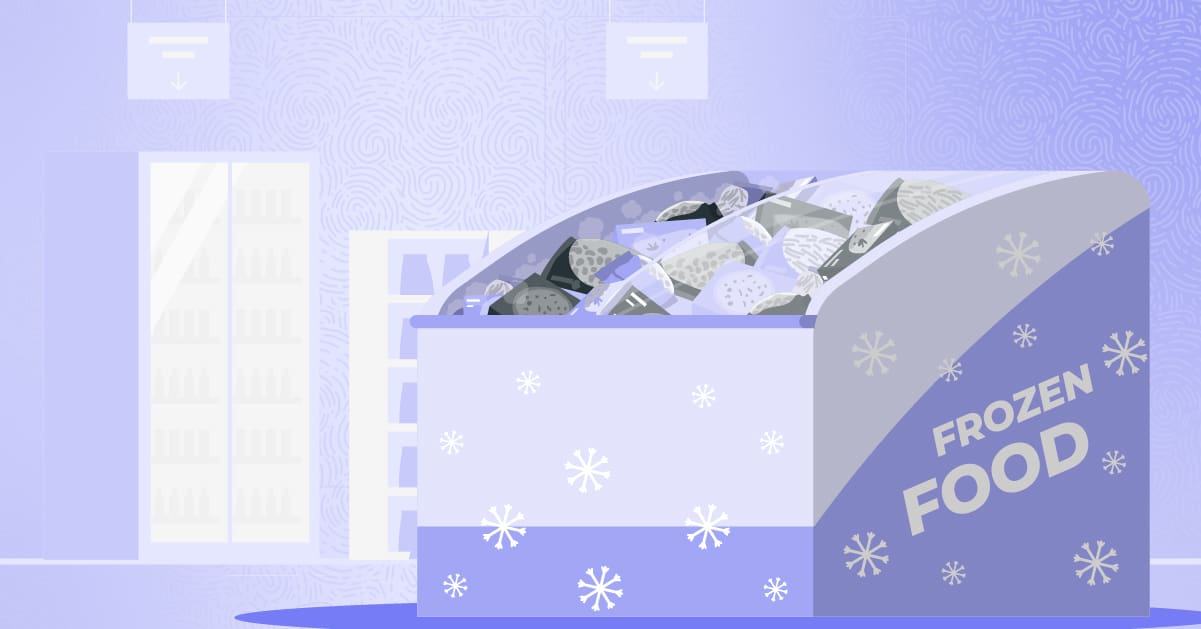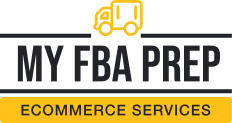
Cold Chain Logistics: A Guide to Temperature-Controlled Fulfillment for Perishables

Have you heard about the failed Cherry Express run?
Chile shipped about $60 to $130 million worth of cherries to China, but the shipment was delayed in the Pacific Ocean and arrived 28 days late. Even though the cherries were kept cold the entire time, many of them still spoiled and were rejected once they got there.
Thankfully, some of the cargo was still in good enough condition to be salvaged, giving Chilean exporters at least a little room to negotiate.
Now, imagine if there were no cold chain system in place at all. Sure, the loss was already massive, but without proper temperature control, there wouldn’t have even been a chance to recover anything.
In this article, we’ll explain cold chain logistics, the common challenges businesses face, and how you can protect your perishable goods shipping every step of the way.
What Is Cold Chain Logistics?
Cold chain logistics is about moving and storing products while keeping them cold or frozen until they safely reach your customers. This temperature-controlled fulfillment process helps:
- Keep products fresh and safe to use
- Avoid losing money from spoiled shipments
- Stay compliant with health and safety regulations
- Build trust by delivering quality every time
Without cold chain logistics, products can spoil fast. Just like in the Cherry Express case, entire shipments could end up being thrown out, costing businesses millions and wasting valuable goods.
And while food is the first industry that usually comes to mind when you think of cold chain logistics, it’s not the only one that relies on it. Other industries that also require temperature-controlled handling include:
- Pharmaceuticals
- Healthcare and medical supplies
- Cosmetics and personal care
- Floral
- Chemical and industrial products
- Art and culture
6 Common Challenges in Cold Chain Logistics
Cold chain logistics has many moving parts, which makes it more complex than your typical fulfillment setup. Because you’re dealing with temperature-sensitive products, there are extra steps, stricter rules, and less room for error.
Here are some of the most common challenges you might face:
Temperature fluctuations
Just because the word “cold” is used in cold chain logistics doesn’t mean any low temperature will do. Different products have specific temperature ranges they need to stay within, and going above or below that can cause serious problems.
Take vaccines, for example. Some must be stored between 2°C and 8°C, while others must be frozen. If they drop below or go above that range, they can lose their effectiveness entirely, even if they were kept “cold.”
The same goes for food. If something in the system fails and the temperature drops too low or gets too warm, products can spoil quickly. You might see mold, bacteria, or changes in texture and taste. Once that happens, the food is no longer safe to eat, and the entire shipment could be lost.
Inadequate packaging
The main purpose of using proper packaging for cold items is to:
- Keep products from warming up too quickly
- Maintain a consistent temperature throughout the journey
- Prevent leaks and contamination
- Protect items from getting crushed or damaged
- Reduce exposure to outside air and humidity
- Extend the shelf life of the product during transit
- Comply with safety and health regulations
Since cold items have different storage needs, there’s no one-size-fits-all solution. The type of packaging used often depends on the product type, how sensitive it is, how long it will be in transit, and what temperature it needs to stay at.
Here are some common types of cold packaging and what they’re typically used for:
- Insulated foam containers: Offers excellent temperature control for frozen food, seafood, vaccines, and others that need strong insulation
- Gel packs and ice packs: Maintains a cool temperature (but not freezing) for fresh produce, dairy, and cosmetics
- Dry ice: Keeps frozen meat, pharmaceuticals, and lab samples frozen solid for extended periods
- Vacuum-sealed bags: Reduces air exposure and prevents leakage, spoilage, and contamination for meats, seafood, or prepped meals
- Cooler bags or pouches: Convenient for same-day or next-day delivery for groceries, cosmetics, or medications
And more!
Regulatory compliance
Rules can change without warning, so it’s important to stay updated on regulations, especially when shipping temperature-sensitive items. One small change could delay your shipment or even cause it to be rejected.
And it doesn’t stop there! Different countries have different compliance requirements. What’s acceptable in one place might not be allowed in another, which makes it even more challenging.
Staying on top of packaging, labeling, and safety rules for cold and frozen goods can take a lot of time, effort, and coordination. But it’s necessary if you want your shipments to arrive safely and get cleared without issues.
Infrastructure gaps
Not every city or region has access to proper cold storage facilities or systems, and that can be a real challenge for businesses that rely on cold chain logistics. Without the right infrastructure, it gets harder to keep your products at the right temperature throughout their journey.
Many businesses hit a wall here. Without the right connections or trusted partners in key locations, you might find yourself stuck with no reliable way to move your goods safely.
Delays in transit
We’ve already discussed a clear example of this—the Chilean Cherry Express, which was delayed for nearly a month. When dealing with perishable goods, unexpected incidents like this must be handled immediately. You don’t have time to wait.
Since these products are temperature-sensitive, any delay can quickly compromise their quality. In cold chain logistics, delays mean problems, especially for frozen or fresh items. The longer it takes to resolve an issue, the greater the risk of spoilage, loss, and wasted money.
Limited visibility across the supply chain
So, you’ve got the proper packaging. Does that mean you’re all set? As much as we’d like to say yes, the answer is no.
In cold chain logistics, visibility is everything. Without real-time tracking or temperature monitoring, you’re basically shipping your goods blind. You have no way of knowing if they stayed within the right temperature range or arrived in perfect condition.
And if something went wrong and you didn’t catch it? That puts your product and your customer at risk. If spoiled or compromised items reach your buyers, you don’t just lose the shipment. You risk damaging your reputation, your brand’s integrity, and the trust you’ve built with your customers.
8 Best Practices for a Reliable Cold Chain Logistics Service
So, how do you ensure efficient temperature-controlled fulfillment? Here are eight best practices you should start implementing.
- Plan every step: Map out your process and prepare for possible risks before you ship anything.
- Use the right temperature-controlled packaging: Pick packaging that’s made for your specific product’s temperature needs.
- Invest in real-time monitoring: Temperature sensors help you spot and fix issues while your shipment is on the move.
- Optimize transit time and routes: The quicker and more direct the route, the better for temperature control.
- Train your team thoroughly: Make sure everyone handling your goods knows how to keep them safe.
- Use certified cold chain partners: Partner with logistics experts who specialize in temperature-sensitive deliveries, such as MyFBAPrep.
- Label shipments clearly: Add clear and visible labels like “Keep Refrigerated” or “Temperature-Sensitive” to inform everyone how to treat the package and avoid damage properly.
- Have backup plans in place: Always have a plan B ready should things go wrong. Things creep up on us when we least expect them, so a backup option is a must.
How MyFBAPrep Handles Cold Chain Logistics
At MyFBAPrep, we understand how high the stakes are when shipping perishable or temperature-sensitive items. That’s why we’ve built cold chain logistics solutions designed to deliver products in perfect condition, every time.
Temperature-controlled warehousing
We have special storage areas across the country that can keep your products cold, frozen, or at room temperature, depending on their needs. These storage areas are clean, safe, and checked regularly to ensure everything is working properly.
You can even check on your items through our Preptopia® portal. If anything needs to be adjusted, you can contact the warehouse team right away.
Nationwide fulfillment network
We have warehouses all over the U.S., including places near major cities and ports. This helps get your products to your customers faster and lowers shipping costs. We can handle orders going to Amazon, stores, or straight to customers at home.
We also:
- Have backup space in busy areas
- Offer both short-term and long-term storage
- Work with major shipping services like Amazon, Walmart, and Shopify
Regulatory compliance
We follow strict rules to make sure your items are handled safely. Our warehouses are checked and certified by groups like the FDA and USDA. We also track inventory and ensure products are used or shipped in the correct order to avoid waste.
Our team also stays updated on changing rules so your shipments won’t run into problems.
Cold chain co-packing services
We can do more than just store and ship your items. If you need your products bundled, labeled, or packed in a special way (like for a subscription box or gift set), we can do that too.
Some solutions include:
- Grouping items into bundles or kits
- Adding barcodes, labels, and inserts
- Preparing orders for retail stores or influencers
No matter what kind of cold items you sell, we help keep them fresh, safe, and ready to use when they reach your customers.
Safeguard Your Temperature-Sensitive Products with MyFBAPrep
Cold chain logistics can be tough, especially if you’re not entirely familiar with how it works or what it takes to do it right. To handle it well, you must understand the process, know the common challenges, and be prepared to meet your customers’ expectations.
That’s where MyFBAPrep comes in. With our cold chain logistics solutions, we’ve helped many businesses manage temperature-sensitive fulfillment smoothly and confidently. We ensure your products stay safe, fresh, and compliant so you can protect your reputation and keep your customers happy.
Want to learn how we can support your business? Reach out to our team today!
